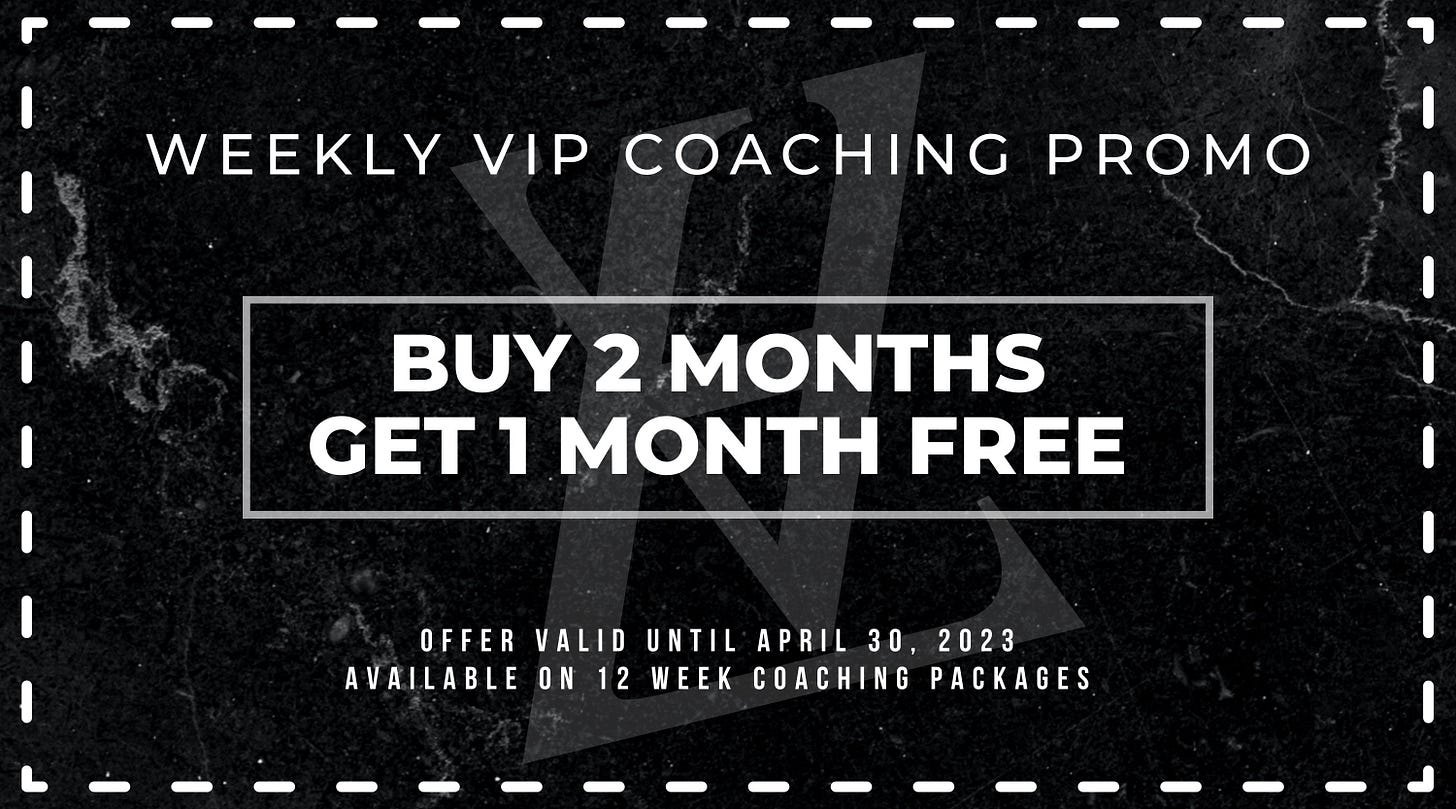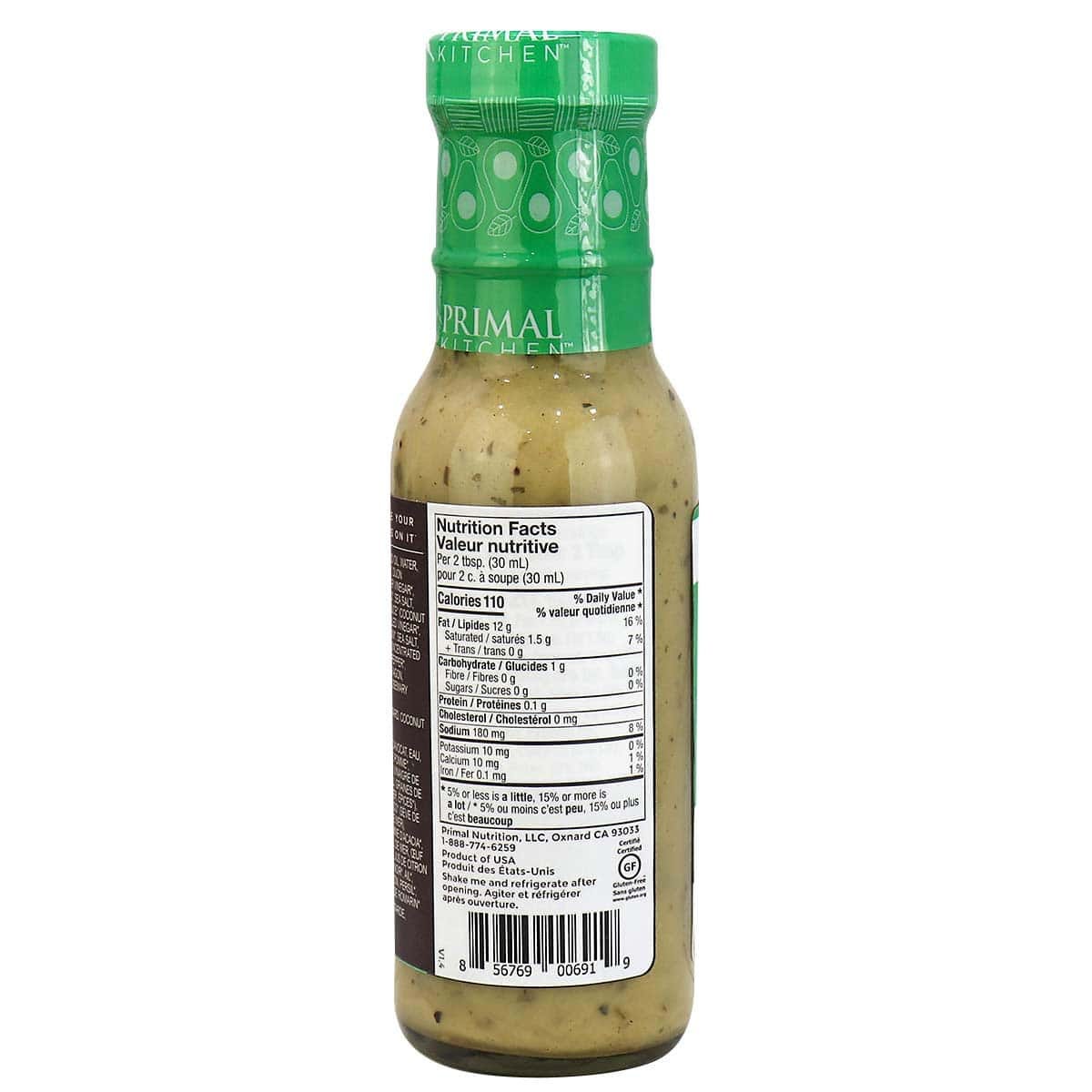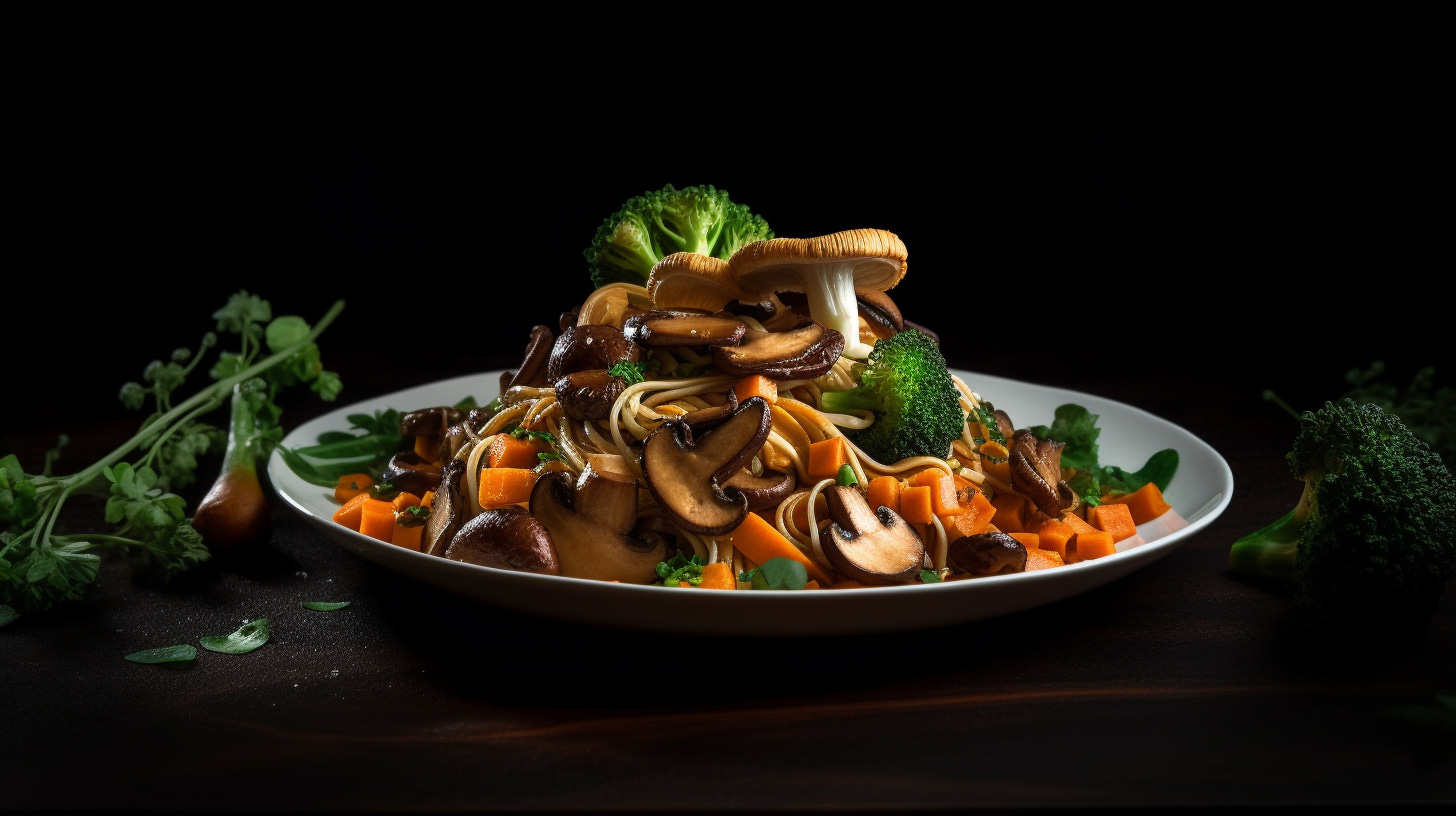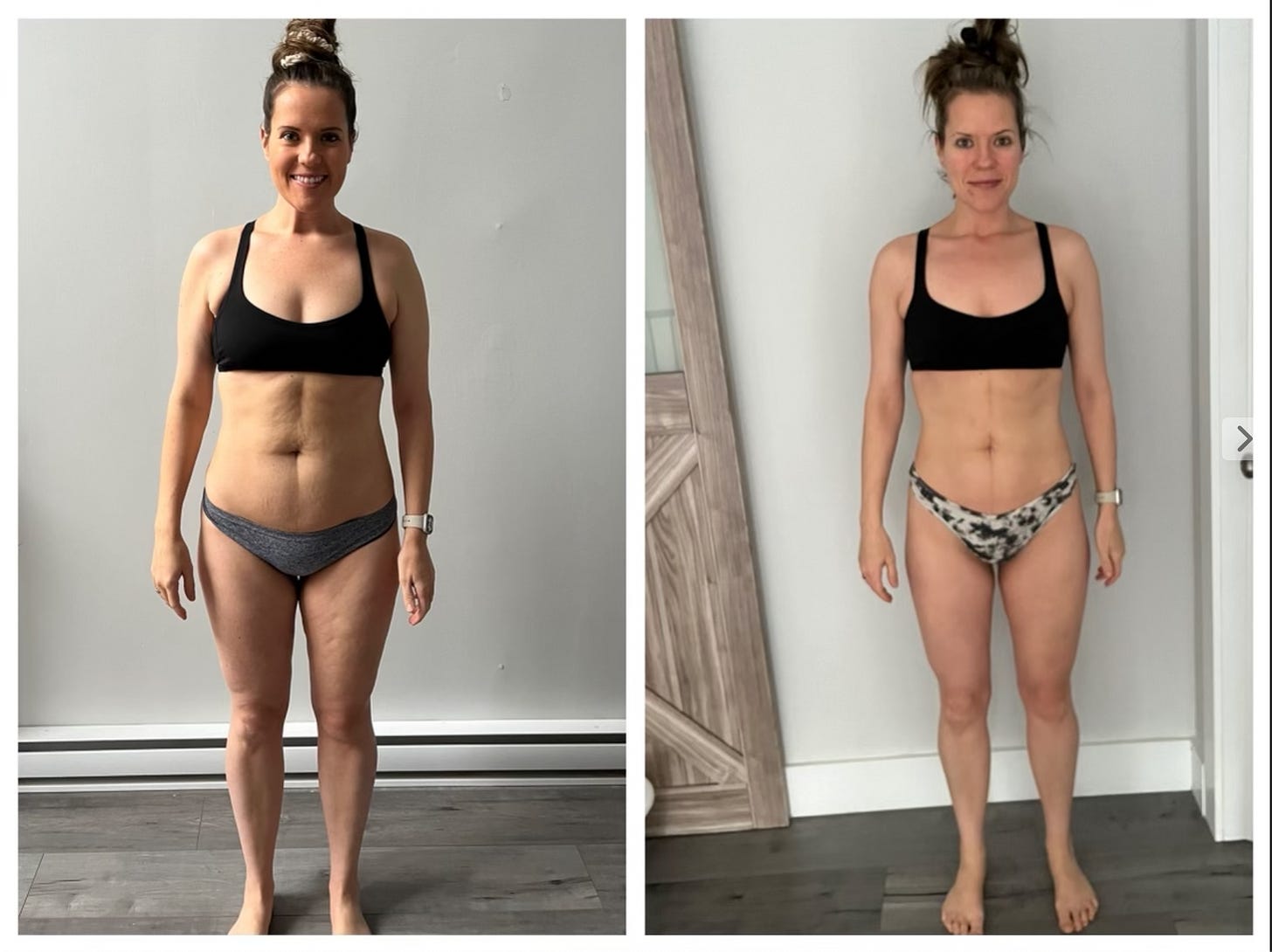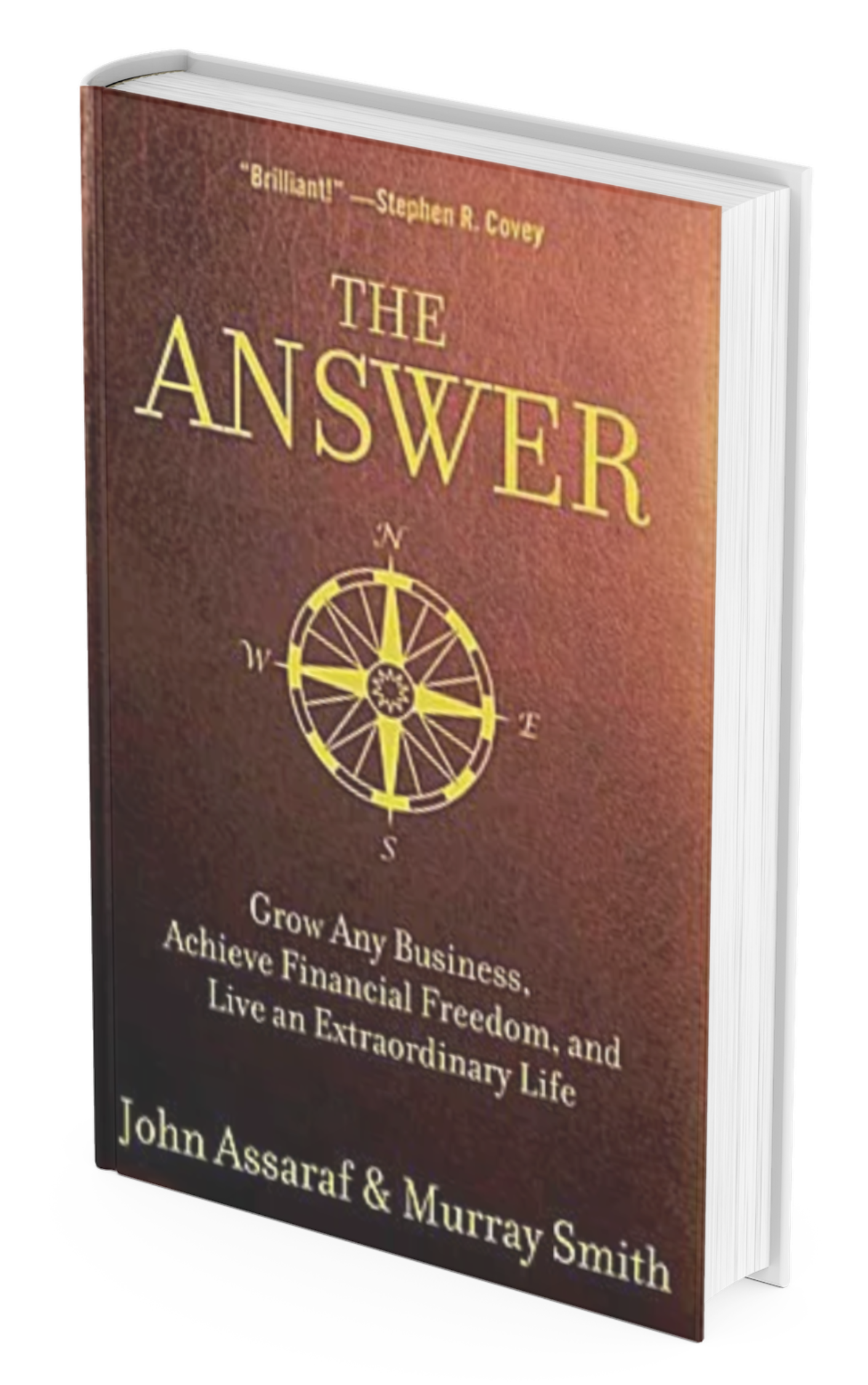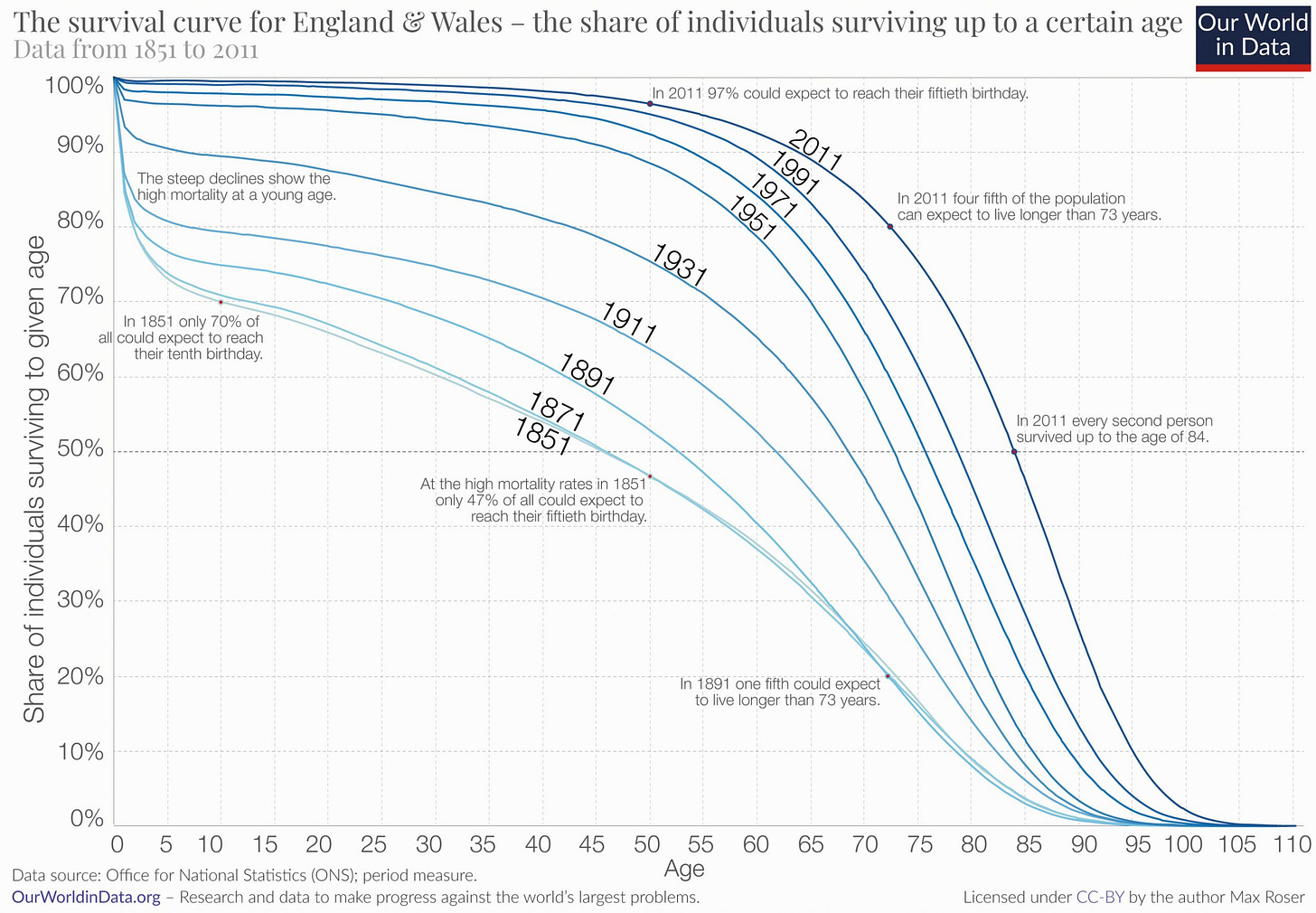🗞 LiveTo120 Weekly Newsletter | Edition No. 007
The #1 longevity newsletter on substack for actionable insights on nutrition & wellness, physical & mental fitness + the latest trends in longevity.
Thursday, April 13th 2023
Hello Friends,
Welcome to the seventh edition of the #LiveTo120 Newsletter - we hope you’re enjoying your subscription to our Life Aesthetics substack and we have another awesome weekly newsletter for you ahead.
In our nutrition section, Coach Jodii is helping us become grocery gurus by helping us master the art of reading food labels. Coach Matt steps up under the Fitness & Movement section highlighting the importance of tracking our step count each day and the value that fitness trackers have on our goals.
We understand reading a full edition can be a workout in itself, so after you exercise your brain grab a protein shake to recover but not before you read our Supplement section covering ‘What’s in Your Protein Tub 101’.
We finish our edition this week highlighting the incredible transformation of our client Alicia who has been a pillar of our Life Aesthetics community for years.
We have these topics and much more to dive into this week, so let’s get going.
We're grateful for each and every one of you. Enjoy the edition, and check your inbox next week for edition No. 008.
Sending the best of vibes,
-Jodii & Matthew
📍 Before we dive in, take a moment to make yourself comfortable and relaxed.
⏳ We have about 10-15 minutes of reading ahead, but if you prefer, there's also an option to listen to this episode via audio at the top of the newsletter.
#LiveTo120 Reader Exclusive Offer
🥞 Nutrition & Diet: “From Confusion to Clarity: Mastering the Art of Reading Food Labels”
Have you ever found yourself standing in the grocery store aisle, staring blankly at the back of a food package, trying to decipher what all those numbers and percentages actually mean?
Trust me, you're not alone.
Reading a nutrition label can feel like you’re reading a different language with so much information packed onto a single label, it's easy to feel overwhelmed or confused.
Knowing how to read a food label is a crucial skill to have if you want to make informed choices about the foods you eat.
By understanding what all those numbers and percentages represent, you can get a better sense of the nutritional value of the food and make decisions that align with both your body composition goals and your health goals.
When reading a food label, there are several key components that you should be paying attention to:
📃 The Ingredient List
I always recommend starting with the ingredient list when reading a food label. Why? Because it's a great way to get a better understanding of what you're actually putting into your body.
It's easy to get caught up in just looking at the calories or macronutrients, but it's important to pay attention to the ingredients that make up the food as well.
After all, even if a food is low in calories and fits within your macro targets, it may not be the best choice if it's full of inflammatory ingredients or highly processed additives.
By taking the time to read the ingredient list, you can make more informed choices about the foods you eat and support your overall health and well-being. Trust me, your body will thank you for it!
🚨 Here are (5) ingredients I look for on my food labels to avoid:
Hydrogenated oils: Examples of hydrogenated oils include partially hydrogenated soybean oil, canola oil, and palm oil. These oils are often used in packaged foods to extend their shelf life and improve texture, but they are also a major source of trans fats. Trans fats have been linked to an increased risk of heart disease, inflammation, and insulin resistance.
Seed oils: Seed oils are also known as vegetable oils and are extracted from the seeds of plants and include oils like soybean, canola, sunflower, and corn oil. Seed oils are high in omega-6 fatty acids, which can promote inflammation in the body when consumed in excess. Seed oils are often highly processed and stripped of nutrients using high heat, chemicals, and solvents. This can damage the oil's structure and make it more prone to oxidation, which can create harmful free radicals in the body.
Artificial Colors: Examples of artificial colors include:
Blue 1 and 2: These colors have been linked to behavioural and learning problems, as well as cancer in animal studies.
Red 3 and 40: These colors have been linked to hyperactivity in children and are also potential carcinogens.
Yellow 5 and 6: These colors have been linked to hyperactivity, allergic reactions, and other negative health effects.
Green 3: This color has been linked to tumors in animal studies and is considered a possible carcinogen.
Artificial Sweeteners: Examples of artificial sweeteners include aspartame, sucralose, and saccharin. These sweeteners are often used in packaged foods and beverages to reduce the sugar content. However, they have been linked to negative health effects, including headaches, digestive issues, and increased risk of metabolic syndrome.
Monosodium Glutamate (MSG): MSG is a flavor enhancer commonly used in packaged foods like soup, salad dressing, and processed meats. It has been linked to negative health effects, including headaches, nausea, and digestive issues. When reading food labels, look for ingredients like monosodium glutamate, hydrolyzed vegetable protein, or autolyzed yeast extract, which may contain MSG.
⚖️ Serving Size + Servings Per Container
The serving size listed on a food label can help you understand how much of the food you're actually consuming for the listed calories and this is where a lot of people go wrong.
Companies will often list a small serving size. listing a small serving size, the calorie and nutrient information on the label may appear lower than it actually is.
This can make the food seem like a healthier option, when it fact it is not.
Example: Hershey’s Chocolate Easter Eggs
Per Serving (3 pieces) is 3.5g fat, 25g carbs and 2g protein and has 13g sugar.
The problem is that most people don’t only consume 3 mini chocolates out of a bag and often times miss the serving size all together.
There are (6) servings per container and Per ‘Serving’ is (3) pieces which means per container there is (18) pieces total .
So, if you were to consume the entire container of easter chocolate then you would actually be consuming:
21g Fat
150g Carbs
12g Protein
840 Calories
Pay attention to the the serving size and servings per container and be sure to adjust the calorie count based on the actual (and realistic) amount you plan to consume.
🧮 Macronutrients + Calorie Count
After you check out the ingredient label on a food and also understand how to read a serving size then you can take a look at the composition of the food also known as the “Macro Count”
When you're trying to reach specific calorie and macronutrient targets, reading nutrition labels becomes incredibly important. By understanding the Macronutrient breakdown and calorie content of the foods you eat, you can track your intake and ensure that you're hitting your target for each macronutrient.
Macronutrients are the the three main components of our diet that provide us with energy: protein, carbohydrates, and fats.
Each macronutrient contains a certain number of calories per gram:
Protein contains 4 calories per gram
Carbohydrates contain 4 calories per gram
Fats contain 9 calories per gram
After you check out the ingredients and they look good, then you can look at the serving size and then the total amount of carbs, fats and proteins per serving.
You can then ask yourself if this food is a good “fit” for your daily budget.
Here is an example:
Primal Kitchen Green Goddess Salad Dressing
Serving Size: 30ml
12g Fat
1g Carbs
0g Protein
Ingredients: Avocado Oil, Water, Organic Apple Cider Vinegar, Water, Organic Mustard Seed, Sea Salt, Organic Spices, Organic Coconut Aminos, Organic Distilled Vinegar, Guar gum, Organic Lemon Juice, Organic Garlic, Organic Chives, Organic Parsley, Tarragon, Savory, Organic Rosemary Extract
This is where you have to ask yourself, is this a good use of 12g of fat and 110 calories?
If you have a total daily fat budget of 40g that is 1/3 of your daily fat.
To put it in perspective, that would be the same amount of fat as 2 whole eggs or 100g beef or salmon or 30g of almonds which would make you feel fuller longer and give you protein.
The key to a truly successful diet is one that is filled with foods you love, but also are functional and make sense for your daily calorie needs.
A lot of the time people struggle not with eating healthy but with not knowing how to build a diet that brings them joy without feeling deprived, depleted and hungry while still staying within their nutritional targets.
It’s a superior approach to focus on choosing quality ingredients so your body can function optimally and knowing how to read a nutrition label is an essential skill for making informed choices about the foods we eat consume on a regular basis.
📝 Featured Recipe: “Herbivore’s Hells Kitchen Stir Fry 🍲”
Looking for a herbivore meal to fuel your training and satisfy your taste buds?
You've come to the right place this week.
We’ve been getting endless feedback on the veggie stir fry kick we’ve been sharing on social media and it’s becoming a favorite among our clients this month.
This herbivore stir fry is not only mouth-watering, but it also packs a protein punch, making it an ideal staple meal in your weekly meal plan.
We put a healthy spin on the classic stir fry by incorporating chickpea or lentil noodles, a variety of fresh vegetables, and a gluten-free teriyaki sauce.
The best part? It's loaded with protein, thanks to the noodles and nutritional yeast!
This dish is designed to provide you with the energy and nutrients you need for your workouts, while also being easy to digest and low in fat. Plus, it's an excellent option for those following a plant-based or gluten-free diet.
Ready to whip up our favorite herbivore stir fry?
Let's dive into the recipe!
Ingredients:
120g chickpea or lentil noodles
150g onion, chopped
150g mushrooms, sliced
120g bamboo shoots, drained
180g carrots, julienned
Olive oil for cooking
Garlic, minced (to taste)
Pepper and sea salt (to taste)
180g broccoli, cut into small florets
Nutritional yeast (to taste)
Gluten-free teriyaki sauce (to taste)
Instructions:
Cook the chickpea or lentil noodles according to the package instructions. Drain and set aside.
In a large cast iron pan or wok, heat a drizzle of olive oil over medium heat. Add the onions and cook until they become translucent, about 3-4 minutes.
Add the garlic, mushrooms, bamboo shoots, and carrots to the pan. Stir-fry for 5-7 minutes, or until the vegetables are tender-crisp.
Toss in the broccoli florets and cook for an additional 3-4 minutes, ensuring that the broccoli stays bright green and crunchy.
Stir in the cooked noodles, nutritional yeast, and gluten-free teriyaki sauce. Mix everything together until well combined and heated through.
Season with pepper and sea salt to taste. Serve immediately and enjoy your protein-packed herbivore stir fry!
Feel free to adjust the serving size to fit your nutritional targets, and don't hesitate to add in your favorite veggies or swap out ingredients to make this recipe uniquely yours.
Happy cookin’
🏋🏼 Movement & Fitness: “One Step At A Time: The Power Of Tracking Your Daily Steps”
As we all embark on our individual quests for a healthier, more active lifestyle, it's imperative to remember that taking it "One Step at a Time" can yield remarkable results.
Embracing the art (and habit!) of tracking our daily steps with devices such as Apple Watches or FitBits can open up a world of possibilities and motivate us to move more, considerably more.
So, let's explore how these little piece(s) of wearable technology can transform our lives and help us achieve some neat results.
ps. When I say neat, I’m not referring to something fancy, I’m referring to the wonders of Non-Exercise Activity Thermogenesis (NEAT) - more on this shortly, but a brief anecdotal story first.
In my experience as a lifestyle coach, clients who consistently track their steps often exhibit far superior results than those who don't.
The simple act of monitoring daily activity levels (like steps) allows them to make informed decisions, set achievable goals, and maintain a sense of accountability.
First and foremost, tracking our steps provides us with invaluable data about our activity levels. It's easy to assume that we lead a fairly active lifestyle, but the truth is often hidden in the numbers.
Fitness trackers help us stay honest with ourselves, revealing how much (or how little) we actually move throughout the day. This data helps us set realistic goals, track our progress, and make necessary adjustments to our routine.
For those looking to challenge themselves, setting specific step targets can prove incredibly effective. A common goal is to aim for 10,000 steps per day, but this number can be adjusted based on individual fitness levels and personal circumstances.
By gradually increasing step targets over time, we can continuously push ourselves to reach new heights in our daily activity.
Moreover, wearing a fitness tracker fosters an environment of motivation and accountability. As we witness our daily step count rise, it instills a sense of accomplishment, encouraging us to go that extra mile or take the stairs instead of the elevator.
These small, incremental changes eventually add up, leading to a more active lifestyle that benefits both our physical and mental well-being.
This motivational aspect has proven to be especially valuable for my clients.
By setting personal step targets and tracking their progress, they develop a deeper connection with their fitness journey. They begin to view movement not as a chore but as an opportunity to grow and thrive in their pursuit of a healthier lifestyle.
Now, let's delve into the magic of NEAT. Non-Exercise Activity Thermogenesis refers to the calories burned during everyday activities such as walking, doing household chores, or even fidgeting.
By tracking our steps and aiming to increase them, we're inadvertently boosting our daily NEAT. In doing so, we elevate our overall calorie expenditure without even realizing it.
Aiming for higher step counts doesn't have to be a daunting task. Simple changes, such as parking farther away from the entrance of a store or taking a short walk during lunch breaks, can quickly add up.
By incorporating these small adjustments into our daily routines, we can easily increase our NEAT and reap the numerous health benefits associated with a more active lifestyle.
When we marry the benefits of a fitness tracker with the concept of NEAT, we open ourselves up to a world of health benefits. By actively seeking ways to increase our daily step count, we're not only burning calories but also improving our cardiovascular health, reducing stress levels, and even promoting better sleep.
One fascinating aspect I've observed in my coaching practice is the ripple effect of tracking steps. As clients become more aware of their daily activity levels, they often develop a greater interest in other aspects of their well-being, such as nutrition and mindfulness. This holistic approach ultimately leads to a more balanced, healthier lifestyle.
So, the next time you find yourself debating whether to invest in a fitness tracker or lace up those sneakers, remember that taking it "One Step at a Time" could be the key to unlocking a healthier, happier, and more active you. Embrace
💣 Knowledge Bomb: “Wind Up Your Human - The Mechanical Function of Walking.”
It's fascinating how our body's mechanical systems come to life when we simply walk.
We’re sort of like biological wind-up clocks that require movement to keep us alive.
Often viewed as just an everyday activity, walking is actually a fantastic way to improve our overall health and longevity goals.
It's truly got so many benefits, like helping with blood flow, digestion, oxygen supply, mental wellness, and even the effect of sunlight on our eyes.
When we walk, our muscles work together in a coordinated dance that strengthens them and helps with blood circulation. Better blood flow means our cells get the nutrients and oxygen they need, which keeps our bodies in tip-top shape.
Plus, walking can help keep our blood pressure in check and our hearts healthy.
❤️
I always tell my clients that walking is one of the easiest things they can do to boost their health. It's so simple to add to your daily routine, whether it's a quick walk around the block or squeezing in a brisk walk during your lunch break.
The key is finding a ‘movement’ routine that works best for you.
Walking also does wonders for digestion. As we walk, our abdominal muscles gently massage the gastrointestinal tract, which helps food move through our digestive system more easily. This can help with bloating, constipation, and other digestive issues.
And let's not forget about our lungs. When we walk, we breathe in more oxygen and breathe out more carbon dioxide, keeping a healthy balance in our bodies. This helps our cells work better and keeps our respiratory system clean.
Taking a walk outside is not only refreshing, but it also gives us a chance to soak up some sunlight. Being in the sun helps regulate our sleep-wake cycle and can even boost our mood.
When sunlight enters our eyes, it helps our bodies produce hormones like serotonin and melatonin, which are responsible for improving mood and sleep quality. This is why walking can be a real mood-lifter and help with mental wellness.
So, walking is more than just a way to get from point A to point B – it's a simple and powerful way to engage our body's mechanical systems and improve our health and well-being. By adding walking to your daily routine, you're taking steps toward a happier, healthier you. Get out there, and enjoy the benefits of this easy and effective exercise!
🏋🏼♂️ Featured Workout: “5000 Steps of Glory”
A 5,000 Step Treadmill Challenge - you ready?
(…of course you are, let’s go!)
The 5,000 Step Treadmill Challenge is designed to help you reach your step goals while providing a fun and engaging workout in ~30 minutes.
No matter the “I-Don’t-Wanna-Do-Cardio” excuse you want to give Coach Matt, you won’t win me over because I designed for all fitness levels and it will keep you motivated and engaged as you work towards completing 5,000 steps in just one session.
That’s half of your daily step target!
Warm-up: Begin your workout with a 5-minute walk on the treadmill at a comfortable pace. Focus on maintaining good posture and taking deep breaths to get your blood flowing and muscles warmed up.
Speed Walking Intervals (10-Minutes): After your warm-up, increase the treadmill speed to a brisk walking pace that challenges you but still allows you to maintain proper form. Walk at this pace for 3 minutes. Then, reduce the speed to a more comfortable pace for 2 minutes. This is your active recovery period. Repeat these (2) intervals for a total of 10 minutes.
Incline Walking (10-Minutes): Increase the incline on your treadmill to a level that challenges you but is still manageable. Walk at a moderate pace for 3 minutes. Then, reduce the incline to a lower level and walk for 2 minutes as an active recovery. Complete (2) sets of this incline walking sequence.
Side Steps (10-Minutes): Slow down the treadmill to a comfortable walking pace, and carefully turn your body to the side. Perform side steps for 90 seconds, focusing on engaging your core and maintaining your balance. Switch sides and perform side steps for another 90 seconds. Complete 3 sets on each side, with a 1-minute recovery walk pace after all three sets are complete.
Treadmill Sprints (10 Minutes) : For a final burst of energy, increase the treadmill speed to a challenging pace that pushes you to sprint for 30 seconds. After each sprint, slow down the treadmill to a comfortable walking pace and recover for 1 minute. Complete 5 sets of these sprints.
Cooldown: Finish your workout with a 5-minute walk on the treadmill at a slow and comfortable pace. Allow your heart rate to come down and your muscles to relax.
After completing your treadmill session, make sure to stretch your legs, focusing on your calves, hamstrings, quads, and glutes, to help prevent muscle tightness and soreness.
By incorporating the 5,000 Step Treadmill Challenge into your fitness routine, you'll not only reach your daily step goals but also improve your cardiovascular endurance, muscular strength, and overall stamina.
Keep track of your progress and challenge yourself to complete the 5,000 steps in a shorter amount of time or increase the intensity of the intervals for an even more rewarding workout.
🧬 Supplementation & Alternative Medicine: “What’s in your Protein Tub 101.”
Protein Powders: A Short Journey Through Evolution, Variety, and Quality.
Protein powders have come a long way since their inception, evolving to cater to a diverse array of dietary preferences and fitness goals.
Today, I want to dive into why protein powders exist, the evolution of different types, the various sources, and the factors that determine their quality.
Why Protein Powders Exist?
Protein powders were created to offer a convenient and efficient way to increase protein intake for those who need it, such as athletes or individuals with specific dietary requirements.
But keep in mind that protein supplements ought to do exactly that, supplement ones dietary needs, not become the de facto source.
When working with clients, I often use protein supplements to help them meet their macronutrient goals. Protein powders are a versatile and convenient tool that can easily be added to meals or snacks, ensuring that my clients get the right amount of protein to support their goals.
The Evolution of Protein Powders
Protein supplements have gone through several stages of evolution over the past 50 years, starting with concentrates, isolates, casein, and now hydrolyzed proteins.
Each type has its unique benefits and properties:
Concentrates: Protein concentrates are derived from various sources and typically contain 60-80% protein, with the remaining content made up of carbohydrates and fats. They are less processed and more affordable than other protein types.
Isolates: Protein isolates undergo further processing to remove most of the carbohydrates and fats, resulting in a purer protein content (usually 90% or more). This makes isolates a suitable option for those who are lactose intolerant or on a low-carb diet.
Casein: Casein protein is derived from milk and digests slowly, providing a sustained release of amino acids over several hours. This makes it ideal for consumption before bedtime or during periods of fasting to maintain muscle mass.
Hydrolyzed: Hydrolyzed protein is broken down into smaller peptides, making it easier to digest and absorb. This type is ideal for those seeking rapid absorption and recovery after intense workouts.
Protein Sources
Protein powders are derived from various sources, including whey, plant-based proteins, and animal-based proteins. Each source plays a part in achieving specific nutrition goals:
Whey: Whey protein, a byproduct of cheese production, is a popular and easily absorbed source of protein that supports muscle growth and recovery.
Plant-Based: Plant-based proteins, such as pea, rice, or hemp, cater to vegetarians, vegans, and those with dairy allergies. They provide a complete amino acid profile and are easily digestible.
Animal-Based: Animal-based protein powders, like beef or egg, offer alternative options for those with dietary restrictions. They contain high-quality protein and essential nutrients.
For my clients, I tend to focus more on plant-based proteins than whey protein, as dairy can be a trigger for many people.
Plant-based proteins are less likely to cause digestive issues and allergies while still providing all the essential amino acids needed for muscle growth and recovery.
In addition to recommending plant-based proteins, I also believe in cycling through different protein sources.
Our bodies can benefit from the variety, as each type of protein offers a unique nutrient profile. By rotating protein sources, my clients can ensure they're getting a well-rounded mix of essential nutrients while keeping their diets interesting and enjoyable.
The two brands I recommend the most are ‘Vegan’ by Beyond Yourself and ‘MRE Lite’ by Redcon.
Protein Supplement Quality
Several factors determine the quality of protein supplements:
Source of Raw Ingredients: High-quality protein powders are derived from reputable sources, ensuring that the raw ingredients are ethically sourced and free from contaminants.
Biological Value: The biological value (BV) of a protein measures its efficiency in terms of utilization by the body. Higher BV ratings indicate a more readily absorbed and utilized protein.
Amino Acid Spiking: Some manufacturers may add cheap amino acids to their protein powders to artificially increase the protein content. High-quality protein supplements do not engage in this practice, instead offering a complete and naturally occurring amino acid profile.
The Future of Protein Supplements: Innovations on the Horizon
As we look to the future of protein supplements, it's clear that innovation is a driving force in the industry.
From 3D printing to novel protein sources and cutting-edge formulations, the possibilities are endless in terms of how protein supplements will continue to evolve and cater to our ever-changing needs.
3D Printing: The emergence of 3D printing technology has the potential to revolutionize the way we consume protein supplements.
Imagine being able to create customized protein bars or snacks with the precise macronutrient ratios, flavors, and textures that suit your individual preferences and dietary needs.
This level of personalization and convenience could transform how we approach protein supplementation and make it even more accessible and enjoyable.
Novel Protein Sources: As our understanding of the nutritional benefits of various protein sources grows, we can expect to see the introduction of new and innovative protein options.
This might include the development of protein powders derived from insects, algae, or lab-grown meat, which can offer sustainable and eco-friendly alternatives to traditional protein sources.
By expanding the range of available protein options, we can cater to a wider array of dietary preferences and nutritional needs.
Cutting-Edge Formulations: As research continues to shed light on the optimal ways to support muscle growth, recovery, and overall health, we can anticipate protein supplements to be formulated with an increasing focus on maximizing their effectiveness.
This could involve the incorporation of additional beneficial ingredients, such as probiotics, antioxidants, or adaptogens, to create protein products that not only provide an excellent source of protein but also support other aspects of our health and well-being.
The future holds exciting possibilities for innovations in food chemistry, with the competitive manufacturing industry continuously striving to optimize your gains and make the most of your investment in every tub.
The next time you visit your local supplement store, consider asking about some of the points we've discussed today, such as manufacturing standards, ingredient sourcing, and the biological value of the protein.
This knowledge will help you make informed decisions and choose the best protein supplement for your needs.
🧠 Personal Growth & Mental Health: “The Power of Your Tribe.”
Have the following quote ever found its way crossing your path?
You are the sum average of the five people you spend the most time alongside.
Well, there's actually a lot of truth to it - especially when it comes to our fitness, nutrition and overall wellness journey.
Very commonly, when someone attempts to change their diet or make lifestyle changes, the biggest friction comes from the people closest to them.
This is because your changes cause you to pull away from the status-quo of your group, do things differently than you’ve done in the past that initially led you to the trigger moment of change.
The energy we receive from our tribe can have a significant positive impact on our progress.
When we surround ourselves with individuals who are highly motivated and actively working towards their goals, it can ignite the fire within us.
Instead of feeling discouraged or complacent, we might find ourselves adopting their enthusiasm and determination, which leads to acceleration in our personal
On the flip side, when we surround ourselves with individuals who lack motivation or aren't actively working towards their goals, it can extinguish the fire within us.
Instead of feeling inspired, we might find ourselves adopting their complacency, leading to stagnation in our personal goals.
And there's solid scientific evidence to back this up! Studies have shown that individuals with a strong support system are more likely to achieve their goals, whether it's weight loss, improved fitness, or a healthier lifestyle.
When we have a group of people cheering us on, offering advice, and sharing their experiences, we're more inclined to push ourselves beyond our limits and stay committed to our journey.
This is why having a personal coach, an accountability buddy, getting your family on board with healthy eating or joining a group fitness program or challenge can can be instrumental in helping us overcome obstacles, stay accountable and break through plateaus when things get hard.
The support, encouragement, and wisdom we gain from our tribe can make all the difference in our journey, never underestimate the power of surrounding yourself with the right people.
🏆 Life Aesthetics Featured Client
We're absolutely gleaming with pride over Alicia's results in just 12 weeks. But before we share her before and after, we want to give you context about the incredible journey she has found herself on over the past five years.
Alicia originally joined Life Aesthetics in 2016 with a goal to lose weight and learn how to take control of her physical fitness level and nutritional habits.
She was wildly successful (see memory she shared with us below)
But of course, the story doesn't end here.
Alicia began the next chapter of her life by embracing motherhood and giving birth to her first daughter in May 2022. Concurrently, she was balancing a full educational course load as a full-time Master's student, and needless to say, life presented her with circumstances that challenged her ability to remain consistent with the fitness and lifestyle habits formed years prior.
In January of this year, she challenged herself to a new 16-week body transformation program under the guidance of Coach Matt.
While the knowledge remained intact from her years under the guidance of our coaching methods, it was the accountability and structure she craved to push her into a new routine.
Designing her 16-week program presented new challenges in itself. Alicia had relocated 40 minutes outside of the city and was still in full-time mommy mode while her husband left for work each morning – thus, making it to the gym was out of the question, and we would have to work with what she had at home.
I told her that achieving the results she envisioned for herself might require patience this time around, as her tight schedule between parenting her newborn and studying for her Master's would only leave us a short window each day that she would have to be disciplined and motivated to take action.
Stepping up to the plate, Alicia invested in a home gym to ensure she would reach her goals, literally painting the walls the day before she started her program.
We have to admit, she didn't miss a beat from Day 1.
She built a brand-new regime, waking up each day at 5:45 to complete her daily cardio and workouts, some days with her baby by her side.
She started slowly back working with weights, knowing her strength would be lower than she was accustomed to years prior, and we celebrated the smallest of wins that would stack together week over week.
Now, keeping in mind that her postpartum weight had reached 198lbs, and her program starting weight was over 150lbs, we're so proud to show you her before and after below, where in just 12 weeks she has lost about 10 inches and around 15lbs.
Alicia is returning to school as a teacher in May and will take with her not only the confidence she has rebuilt through her hard work but also the momentum of consistent and nutrient-dense meal choices that will allow her to maintain her body composition while focusing on her long-term longevity goals.
She shared with us this week how grateful she felt that we are the two coaches she trusts the most due to our real-life approach to working with our clients.
And she's right.
Connecting with our clients beyond sets, reps, and calories is our passion.
Having real-life conversations each week and truly being in the boat with each and every one of our clients is mandatory for our approach.
She added in a text message to us that she's so proud of the knowledge she's gained over the years, especially in how we have taught her how to track macronutrients and adopt flexible dieting as a long-term wellness strategy that allows for freedom and joy to be infused with any diet.
And we're equally as grateful for her hard work and to feel the excitement in her being a mommy who will be a role model for her daughter in years to come because of the investment she's made into her health today.
We’re so proud of you Alicia!
💬 Quote of the Week
“When it hurts, observe. Life is trying to teach you something.”
-Buddha
📚 Book Recommendation
If you seek to delve into the profound relationship between the mind and success, I highly recommend exploring John Assaraf's "The Answer."
This enlightening work presents a comprehensive examination of our cognitive abilities, allowing readers to understand the untapped potential of the human mind.
Assaraf offers a synthesis of scientific principles, neuroscientific research, and practical wisdom, masterfully woven together to illuminate the inner workings of our brain. The book sheds light on the significance of visualization, mental rehearsal, and goal-setting, providing a robust framework for personal and professional development.
"The Answer" transcends conventional self-help literature by integrating real-life experiences and empirical evidence, ultimately equipping readers with the knowledge and tools necessary to achieve their aspirations. By engaging with Assaraf's work, you embark on a transformative journey towards self-discovery, empowerment, and success.
📰 Top Headlines in Health & Culture
🗞 Technology News
The World’s First A.I Powered Journal
Mindsera, the world's first AI-powered journal software, offers a multitude of benefits for those who want to improve their self-awareness, emotional well-being, and personal growth.
By leveraging the power of artificial intelligence, Mindsera provides users with unique features and insights that traditional journaling methods cannot match.
Here are some of the key benefits of using Mindsera:
Personalized prompts: Mindsera uses AI algorithms to generate personalized writing prompts based on your previous journal entries, interests, and goals. This feature helps you dive deeper into your thoughts and emotions, encouraging self-reflection and introspection.
Sentiment analysis: The software analyzes the sentiment of your entries, providing valuable feedback on your emotional state over time. By visualizing your emotional patterns, you can gain insights into your well-being and identify areas where you might want to focus on personal growth.
Progress tracking: Mindsera enables you to set and track personal goals, whether they are related to emotional well-being, relationships, or professional development. The AI-powered analysis allows you to monitor your progress over time, helping you stay motivated and celebrate your achievements.
Privacy and security: Mindsera offers secure encryption for your journal entries, ensuring that your personal thoughts and feelings are protected from unauthorized access. This level of security allows you to express yourself openly and honestly without fear of your private information being compromised.
Accessibility: As a digital journaling platform, Mindsera allows you to access your journal anytime, anywhere, and from any device. This feature makes it easy to maintain a consistent journaling routine, which is essential for reaping the full benefits of self-reflection.
AI-generated insights: Mindsera's AI algorithms identify recurring themes, patterns, and areas of improvement in your journal entries, providing you with actionable insights to help you grow and develop. This personalized feedback is invaluable for those seeking to enhance their self-awareness and personal growth journey.
Mindfulness and stress reduction: Regular journaling has been shown to reduce stress and promote mindfulness. Mindsera's AI-powered features, such as personalized prompts and sentiment analysis, facilitate a deeper connection with your thoughts and emotions, contributing to improved mental health and overall well-being.
Mindsera's AI-powered journal software offers a unique and innovative approach to personal development, combining the proven benefits of journaling with cutting-edge artificial intelligence technology.
By using Mindsera, you can gain deeper insights into your emotions, identify areas for growth, and track your progress, all while enjoying the convenience and security of a digital platform.
🗞 Longevity News
Projected Survival Curve Up To Age ‘X’
A survival curve graph is a graph that shows the probability of survival or failure over time. It's often used in medical research to study the time it takes for an event of interest, like death or the failure of a treatment, to occur.
The graph starts at 100% survival and goes down as more and more individuals experience the event of interest. This helps researchers to understand the likelihood of survival or failure over time, and to identify any patterns or trends.
What can you deduct from this survival curve?
My primary curiosity surrounds what advancements over the next 5-10 years may push the curve for 2020 further to the right.
I’d love to see a world where 40-50% of humans have the ability to live a life that spans 100 years or more.
As a second curiosity, I wonder what effects the dramatically falling birth rates around the world will contribute to population collapse meanwhile individual life spans increase.
A concept to ponder, share your thoughts below!
👋🏼 Hey!
Thanks for reading this week's #LiveTo120 Newsletter Edition No. 007
If you have any comments, feedback or questions on any material written in this edition please share as we’d love to continue a dialogue below.
If you enjoyed the read, we’d really appreciate if you’d share our community with your network of friends, family & fellow longevity enthusiasts.
*Disclaimer; we are passionate and educated coaches with 20+ years of combined experience working exclusively online with clients to transform their bodies and their lifestyles; however, it must be said and understood that our perspectives and opinions written on substack are our own and do not constitute specific advice for your individual goals in health and wellness.
All material presented in this newsletter is not to be regarded as medical advice, but for general informational and entertainment purposes only. Following over-generalized Exercise, Diet & Supplementation guidelines does involve risk, so caution must always be utilized and a medical professional consulted to provide unique care and guidance for your needs. We cannot guarantee weight-loss or remedy for ailments by following the information provided within the Life Aesthetics substack. You assume the entire risk of following any information provided within our publications. You are solely responsible for making your own wellness decisions. Owners of this newsletter, its representatives, its principals, its moderators, and its members, are NOT registered medical professionals either within British Columbia or any regional or international regulatory authority. We recommend consulting with a registered medical professional for tailored healthcare. Reading and using this newsletter or using our content on the web/server, you are indicating your consent and agreement to our disclaimer.




